I never dreamed I would be a bilingual homeschooling mother of four, or that I would have the luxury of watching them grow, educating them, and playing with them daily.
I had no idea I would discover such a passion for teaching people how to start teaching Chinese at home or that I would enjoy sharing it so much through Fortune Cookie Mom.
I can’t believe I can share my skills, my life experiences, and creativity with over +3000 families by teaching them how to start teaching Chinese at home through amazing Chinese resources, printables, and LIVE challenges.
This in-depth guide will show you exactly
- How to start
- How to prepare your children to learn Chinese
- How to set up your home, what kind of tools and resources to use
- How can you learn Chinese alongside your children
- How to stick with it.
It’s going to be incredible!
Besides this insanely useful guide, I’ll also prepare some very helpful freebies and downloadable PDFs so you’ll have all the resources you need to start teaching Chinese quickly!
The post contains affiliate links, which means I may receive a small commission, at no cost to you. If you make a purchase through a link. See the Disclosure for more details.
Table of Contents
Who is this guide for
I’m here to help and serve (fluent/ non-fluent) parents in their teaching Chinese to kids’ journey. But this guide can be used by any Chinese teachers, tutors, playgroup directors, or grandparents who take care of children and want to support their Chinese learning.
It is for Parents who:
- Want to teach their children speaking, reading, and have fun using the Chinese language
- Are committed and believe that learning Chinese is their top priority in their family
- Want to get involved and support their children in Chinese schools or classes
- Want to raise their children to be global citizens by learning Chinese
- Want to pass on Chinese culture and the language
Even though I mainly focus on parents and family, if you are single, or want to know how you can learn Chinese effectively, go ahead and keep reading. I will share some tips below as well.
Common Misconceptions about Teaching Chinese at Home
These are the most common misconceptions I have seen about teaching Chinese at home. Maybe some of them are things you have thought of too!
- “What if I’m not fluent or don’t know any Chinese at all? There’s no way I can help my kids with their Chinese”
- “Can I just search and use free videos, programs, resources, and articles to teach my kids Chinese at home?”
- “I’m not living in a Chinese-speaking area, so I can’t teach Chinese to my kids”
Want to know why these are misconceptions? Watch this video for inspiration, encouragement, and tips.
Common Mistakes of Teaching Chinese at Home
These are some of the common mistakes of teaching Chinese that you don’t want to make.
No family is perfect, and we are all here trying our best in this journey. If you find yourself have the following mistakes, it’s ok. It’s no big deal as long as we recognize it and do something about it.
Learning a language is like a marathon, it requires consistency and hard work. And most of the time, we are learning from our mistakes, right?
Let’s take a look at common mistakes we all easily fall into.
- Want your child to learn Chinese because it’s the most spoken language in the world
- Your child has very low interaction and learning experience in Chinese
- Start your child to learn Chinese when they are not ready
- Pushing and forcing your children
- Didn’t learn Chinese with your children
- Didn’t provide enough Chinese-rich environment & opportunities at home
What’s the Best Way to Teach Chinese to Your Child?
I was educated in a traditional Hong Kong public school system, honestly, no one teaches you to have fun learning languages, only how to pass all the exams and not fail a class.
Homeschooling changed my perspective because homeschooling is all about creating self-motivated independent learners and not about force-feeding them information. This is the best way to learn anything.
5 tips focusing on teaching and learning Chinese with real-life meaning, practice, and enjoyment
- Teach Chinese using a fun immersive approach so your child can have different Chinese learning experiences: Use Chinese culture, Chinese lessons, daily practice, hands-on activities, books, enjoy modern and ancient Chinese music & dance, Chinese cuisine, and cultural food, get to know Chinese people…
- Focus on learning vocabulary and phrases used in daily routines and interactions, so you can start speaking and using what you’ve learned from day 1
- Practice every day, even just a little bit. Remember we won’t grow without making mistakes, so don’t be scared, you’re on the right path.
- Track progress daily to boost your kids’ confidence.
- Rewards should be random and unpredictable.
- Don’t forget to make it meaningful and fun, so your child will want to do it again.
What’s your favorite way to learn/teach Chinese? Do you have any other things to add to this list?
How to Start Teaching Chinese at Home
Our Chinese teaching goal at home:
“The key to language development for the children of nonnative speakers / as for all children is to have a language-rich environment with varied stimulation and an accepting atmosphere where they are encouraged to express themselves and where their verbal exchanges are valued.”

To provide enough interactions and exposure for your child to feel comfortable to learn and express themselves.
Are you ready to do it?
These 10 steps are how I introduce and teach Chinese to each of my children.
You can go through some steps easier and faster, but some may be harder and will take more time.
Don’t worry! It’s normal. Remember this is not a short-cut for you, but a guide for you to start teaching Chinese at home. As you diligently follow these 10 steps, the snowball effect will happen with the shocking and amazing results you have always dreamed of.
If you need more support, come join us in our Facebook Group and share your Chinese teaching experience with everyone.
Start Teaching Chinese at Home
– Step by Step –
Ready to get your feet wet? You can do it! I’m here for you when you have any questions.
I know it is a gigantic post with tons of steps, that’s why I have prepared a CHECKLIST for you to download and make it easier.
After you’ve signed up, you will also have access to all my freebies in my Chinese Resource Library.
Step 1: Things to Know Before Starting to Teach Chinese at Home
,You may want to go through the following items first, so you know to expect.
Should my Kids Learn Chinese?
There are so many benefits such as brain development and connecting with more people.
Here are some benefits:
- Increase brainpower
- Academic advantage.
- Have opportunities to find a job in the future
- Make a more meaningful connection with people
- It is the best way to understand the authentic Chinese culture
- You can enjoy an abundance of Chinese tv shows, cartoons, literature, etc.
What is the best age for my kids to start learning Chinese?
If you want your children to develop a native accent easier, start them before the age of 12. Of course, it’s easier for them to learn a new language the younger they are.
Is Chinese hard to learn?
Chinese may have a different writing system and phonetic system than English, but it doesn’t necessarily make it harder. If you learn around 2000 Chinese characters, you can understand most Chinese books and newspapers. You can master all 2000 characters in less than 2 years if you memorize and learn 20 characters per week.
Use the root/ radicals’ memorization method. It’s easier to learn because a lot of Chinese characters are built from it. It’s like Lego. You may need to work hard in the beginning for basic characters but, after that building upon that base is much easier.
The grammar in Chinese is simpler and easier to learn. It’s very similar like English.
There are over 400,000 children in the US attending Chinese immersion schools, and there are over 3000 families teaching and supporting their children in learning Chinese by using my blog’s resources.
You are not alone, you are joining the trend of teaching Chinese.
Am I willing to making Chinese learning a priority?
It takes a lifetime to acquire a language and even then, there will be words and phrases we don’t know. I don’t completely understand everything in Chinese or can I read all the Chinese classics yet. I can still learn new things from the language itself and the culture every day. Just as you can say the same about your mother language.
The key is being willing to make Chinese learning a priority. Are you committed?
If you are not sure, try taking a free online class, or watch a couple of videos to learn some basic Chinese phrases. You may just fall in love with the language after getting your toes a bit wet.
Step 2: Which Chinese are you going to teach your kids? Mandarin/ Cantonese/ both?
If you choose to learn Mandarin, it’s perfect to travel, live, and work in Mainland China, Taiwan, Singapore, and Malaysia.
If you choose to learn Cantonese, it’s perfect to live and work in Hong Kong, Macao, and southern parts of China.
Most Chinese immersion schools in the U.S. teach Mandarin with Simplified Chinese characters.
It depends on your goals, where are you located, and your family background. You may choose either, or both.
If you still feel a little confused between the different dialects and want to learn more, I have written a blog post with details and examples of the differences between Mandarin and Cantonese.
For our family
My children learn both Mandarin and Cantonese. First of all, I know both of them. By knowing Cantonese and Traditional Chinese characters, I was able to teach myself Mandarin and Simplified Chinese through tv, movies, pop songs, and speaking to Mandarin speakers.
Also, I served an 18-month mission as a Mandarin-speaking Sister Missionary for the Church of Jesus Christ of Latter-Day Saints and taught a year in a Chinese immersion program at an elementary school in the U.S. I feel it is important my children learn both of them.
Step 3: Commit to doing it with your kids
As humans, we are designed to have feelings of fear, which can help us make good judgments for our safety.
I had so many fears when it came to homeschooling, my children. I felt responsible for their education and their entire future. I could spend hours about the countless fears I had when I was just starting to homeschool.
But,
“Do not fear mistakes. You will know failure. Continue to reach out.” -Benjamin Franklin
I knew deep down in my heart; I wanted it to be a success. And I know there is no success without trying, making mistakes, and trying again.
My badminton coach once taught us to plan for the worst scenario and try your best in every moment.
So, I ran through all of the worst scenarios and failures in my mind. From my kids rejecting Chinese to and completely hating it to me not knowing how to find resources.
After I went through all that in my mind, I felt better. It’s not that bad, it’s not the end of the world.
I also understood it was my responsibility to provide them the opportunity for learning Chinese, and if after learning from me they decided not to continue with Chinese. Oh well, that’s their choice. I won’t force them ever.
I strongly believe that it will work out when I do everything right, especially when my husband and I are committed to doing it.
How about you? What’s your story? What motivates you to teach your children Chinese? Feel free to share with us in the comment below.
Step 4: Create a Chinese Language-Rich Environment at Home
Why is it Important to Create a Chinese Language-Rich Environment at Home?
- Kids learn better when they feel comfortable
- It’s easier to make connections and even increases motivation if we are in the right environment
- Stimulates their senses, sparks curiosity
- Creates a series of experiences
- Because it’s fun! It keeps your child engaged and interested.
What Should a Chinese Language-Rich Environment Include?
Especially for those who are not living in any Chinese speaking area, these are the 5 basic elements to be included in your home to create a Chinese language-rich environment for your children.
- A Home Library
- Decorations
- Place to Play
- Routine and Habit
- Role Models
Here is a blog post where I will explain these basic elements in-depth.
How Do You Create and promote a Chinese Language-Rich Environment?
It’s an exciting part. You get to create with your children and even family. There is a lot that you can put into, but here are some basic activities you can start with.
Here are some examples
- Read Aloud Every Day
- Use Chinese Word Walls and Chinese Labels
- Put the Chinese language in unexpected places
- Encourage independence reading and family reading
- Encourage to write and speak Chinese (even add some rewards)
- Play games in Chinese as a family
- Play Chinese language games & apps
- Speak Chinese as much as you can
- Make and Put up some Chinese decorations together
- Have Chinese music playing in your home
- Learn how to cook and eat Chinese food together
Click HERE to get even more ideas on Chinese activities for your entire family.
No matter what you have decided to do, it’s also important to talk with your spouse and make sure you are on the same page. It’s so much easier to have success when you get support from your spouse.
We are talking about creating a change in your home environment. You’ll create new family traditions and routines together. Your family and home will change, and your children’s lives are going to change as well.
Yes, it is an important decision.
But don’t worry! Start small! Change one thing and try one new activity at a time.
Step 5: Create a Routine as a Family
Do Children like Routine?
Yes, not just children but adults as well.
We all love to be settled and have a predictable life and schedule with familiar activities and habits to do, it makes us feel safe and secure.
What are the Benefits of Having a Routine?
Young children don’t know how to organize their time and order their lives. By having a routine in your family, it makes everyone’s life much easier.
Speaking from experience. Without routine and habit, my life is chaotic with four children running around the house not knowing what to do next. They do whatever they want, and I can’t keep up with them at all.
Here are some more benefits of having a structure and routine.
- Less confusion, less frustration, and tantrums
- Have time to master different skills
- Children feel safe and secure, and they are happier and healthier
- Easier to make changes and develop new skills
- Cultivate positive daily habits and self-care
What are Family Routines?
Family routines are how families organize themselves and balance their lives together. They decide when to spend time together and how the family will run.
Each family is unique. You can start planning your daily routines, weekly routines, and other occasional routines with your spouse.
Family life is very important. When your family is organized and happy, each family member is happy and healthy as well.
How do you Establish a Family Routine?
- Print a Daily Calendar, analyze and plan with your spouse first
- Brainstorm what things to add into the family routine
- Pick only one new routine to add each month
- Follow the routine for a whole week
- Evaluate with your spouse and children, make adjustments if needed
- Stick with it even it’s not perfect.
How do you add Chinese learning activities into your routine?
- Brainstorm and decide on one Chinese learning activity to add into your routine
- Pick the best daily time for the routine
- Prepare the materials/resources
- Follow the routine for an entire week
- Evaluate with your spouse and children, make changes if you need
- Get support and ask questions if you need
- Stick with it even it’s not perfect
- Rewards should be random and rare
Related:
- 13 Tips for Surviving Both Homeschooling and Working from Home
- Bilingual Homeschooling: A Mother of 4 Shares Her Schedule and Advice
- Create a Routine with Appropriate Activities
(You can see my daily routine now, and click the link to read even more)
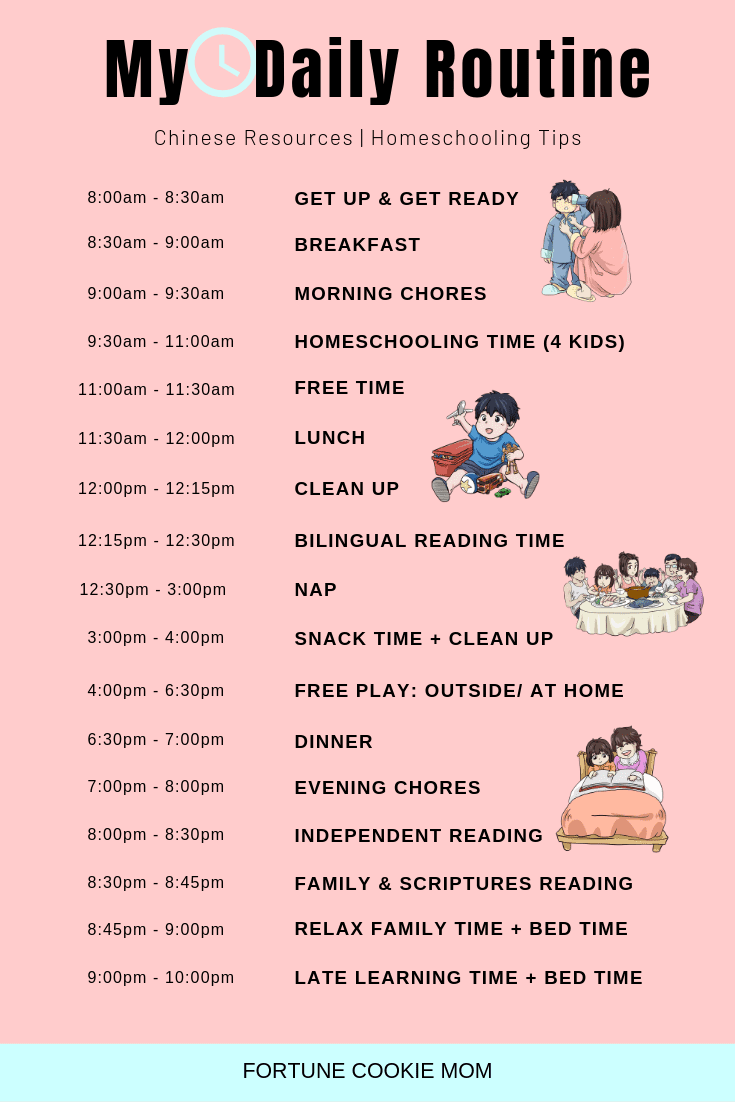
Things that You can Add in your Family Routine to Promote Chinese Learning
- Preparing and eating Chinese meals together
- Spending family time (e.g. reading Chinese books, going for a walk and talking about Chinese class together, praying in Chinese, reading scriptures, playing games in Chinese, etc.)
- Celebrating different Chinese festivals and holidays together
- Spending one-on-one time with parents (talk about their day, their goals, their learning…)
Need more ideas on activities to promote Chinese learning as a family? I have written a blog post where I share the BEST 10 family activities to do to Promote Chinese learning for you.
Is There a Family Calendar App?
Yes. I do love the traditional written calendar. Using a computer and phone sometimes confuses me. But I do use them too.
These articles will help you with choosing an app for family calendars as well.
- The Best Family Calendar Apps to Bring Everyone Together from HelloTeach
- 20 Inspiring Home Command Centers from Poofy Cheeks
- Organizing Made Simple: Family Calendar Ideas from The Turquoise Home
Getting the whole family to involved is the best support your child can have. Your child will know they are not alone in learning Chinese, and they will know they are not the only ones who know how to speak Chinese in their family.
You don’t have to be the perfect family or speak perfect Chinese to have amazing experiences. Each family is unique. You will create amazing family memories while growing toward each other through learning Chinese language and culture.
I have also created Introducing Chinese at Home, an online course to teach you, step by step, how to lay a solid foundation, have fun introducing Chinese language and culture through routines, and how to create a flexible plan which helps kids learn independently.
There are parents from all over the world who completed Introducing Chinese at home. It will save you weeks of time and research, so you can start teaching Chinese at home right away.
Click HERE to learn how this course can also benefit you.
Step 6: Provide more Chinese cultural experiences at home
Only learning text, vocabulary, and grammar can be boring and is meaningless. Kids are motivated when they understand how useful, fun, and important learning Chinese is.
I understand most of you may not live close to any Chinese communities or have easy access to any Chinese resources around your home.
That’s hard, but it’s still possible for you to provide Chinese cultural experiences if you want to.
Because when you are talking about cultural experiences, it is all about having fun. Fun things to try, yummy Chinese food to eat, interesting events to attend, and amazing activities to do.
It will require some extra work, but it’s well worth it when your children show interest in learning Chinese, right?
Why is culture important?
Culture is part of the reasons why people speak, dress, and act in certain ways in a community. It influences their views, values, hopes, dreams, anxiety, and fears.
By learning the Chinese culture, we are teaching acknowledgment and understanding of the Chinese culture. We are trying to understand why Chinese people speak, act, dress, and believe things that may or may not be different from us.
When we have the awareness that people are different, they have their own culture, values, and beliefs, we can learn to respect them and appreciate them.
What are the benefits of learning about other cultures?
- Reduces Stereotypes
- Value and Respect other’s and your own culture
- Create new experiences
- Create more common areas and increase the opportunity to meet new people
- Promote more effective communication
- Realize there is more than one way to do something
- Become a global citizen
- Create Empathy and understanding
These beautiful photos are taken from my husband when we dressed our girls up as Chinese Princesses in Hong Kong.
It was an amazing experience for all of us.
How does culture affect language acquisition?
Culture and language cannot be separated. They are both interconnected and support each other.
Each language is created for expressing and passing on culture and is how important information was shared and preserved.
Languages change when culture is changed as well.
For example
After I graduated in the U.S. and came back to Hong Kong, I was in shock at how much it changed since high school. I went with my friends to watch a movie, and I couldn’t read most of the Chinese subtitles because they were in colloquial Cantonese characters. I was never taught to write these characters in school because our Chinese teachers were strongly against us learning any of them, as there aren’t considered proper characters. But now, they are using them as movie subtitles.
Without knowing the culture, it is like learning the language without meaning or fun.
For example
Even though I have learned English as a second language throughout my life, I was never immersed in the culture. English to me is just ABCs. I didn’t feel any special bond with English. I didn’t like it, because I didn’t get good grades in English. I could read the word but couldn’t understand most English books because I didn’t understand the culture. I quickly lost interest in reading and learning English.
Things finally changed when I took the American Heritage G.E. class in College. That was the first time I learned about American history. I loved learning about history and hearing all the stories, it was amazing to understand how people moved to America, and how they turned it to a free country.
I married a Japanese American, so we watched tons of American tv shows and movies since then. I have learned so much from watching old westerns movies to American comedies.
“Vygotsky’s theory suggests that, although children are born with the skills for language development, development is affected and shaped by cultural and social experiences. The culture in which a person develops will have its own values, beliefs and tools of intellectual adaptation. These all have an effect on cognitive functions, including language development.”
You can start with these 10 Best Activities You can do as a family to enhance Chinese learning first. Then for the biggest Chinese festival, Chinese New Year, you can learn about the Best Chinese New Year Traditions and Activities to Do with your Kids. Also, feel free to try these 5 Steps to Help Kids Memorize the Chinese Multiplication Table.
Of course, if you need even more ideas, we have 100+ Chinese New Year Activities for Kids to Gain Chinese Cultural Experiences that you can use for years without ever repeating.
How can children learn about Chinese culture at home?
There are so many elements in Chinese culture. Find ways to get to know them one by one maybe at least once a month. It’s also great to invite friends and neighbors to join the fun.
You can try these activities:
- Learn to recognize our own culture & build awareness of other cultures
- Read Children Books and literature
- Play Games as a family
- Enjoy Chinese Music
- Family Chinese Movie Night
- Attend Chinese cultural shows and events
- Celebrate Chinese festivals
- Cook and eat Chinese food
- Plan on a trip to China
Here are 10 best activities you can do as a family to enhance Chinese learning with activities in details.
What can parents do to help to promote Chinese learning at home through cultural experiences?
There are so many things parents can do to bring Chinese culture into a home. I also understand every family has unique circumstances, so just try your best. Doing your best is what every child needs.
- Get support from your spouse and make sure you are on the same page on teaching Chinese at home
- Fall in love with the Chinese culture and language first by learning it continually
- Set goals and make plans for consistently having family cultural activities
- Try your best to make those experiences positive
- If your child doesn’t want to do it. Don’t force your child to love those experiences, simply invite them to join
Culture makes the language more alive and meaningful. Your child will fall in love with learning Chinese if they are immersed in the Chinese culture at the same time.
If you have no clue when it comes to Chinese culture, don’t worry. It’s time for you to learn with your children. It will be so much fun to explore and learn new things.
Step 7: Stock Up on Chinese Learning Resources and Materials
I have divided the suggested Chinese Resources and Materials into 3 categories (Reading, Listening & Speaking, and Writing), hope you can find them easily.
Reading
讀
Books & Curriculums
- Sagebooks Basic Chinese 500 基礎漢字: (Traditional Chinese, Simplified Chinese, Pinyin, and English) It’s a 25-book set to teach your kids 500 basic Chinese characters through funny stories and illustrations. It’s very easy to use. When my oldest daughter was 6 years old, she went through all 25 books and learned all 500 Chinese characters within 4 months. I Strongly Recommend them!
- 四五快讀 4, 5, Quick Read: (Simplified Chinese with Pinyin) It consists of 8 books that teach 825 Simplified Chinese characters.
- 樂樂文化 Le Le Chinese Reading Pen: (Traditional Chinese & Simplified Chinese) It is a leveled reading system that teaches about 1000+ Chinese characters from 300 booklets.
My friend Betty has written an article “Chinese Leveled Readers: Comparison of Graded Books for Kids” from her experiences and gives tips to teach Chinese at home.
Dictionaries
- Mandarin Chinese Picture Dictionary (Tuttle Picture Dictionary): (Simplified Chinese, Pinyin, and English) Learn 1500 key Chinese words and phrases
- McGraw-Hill’s Chinese illustrated Dictionary
- Listen and Learn First Chinese Words (Usborne): (Simplified Chinese, Pinyin, and English)
- Children’s First Fun Learning Educational Bilingual Illustrated Storybook: (Traditional Chinese and English) It contains 500 basic English words, 280 example sentences, and 20 life situations with a CD and interactive talking pen.
Online Dictionary & Apps
- Pleco: It translates any Chinese text you scan, or draw characters on the screen of your phone. It includes dictionaries, audio from 2 different native speakers, flashcards and more.
- LINE Dictionary: it contains sample sentences in Chinese.
- Google Translate: It’s is the most convenient app for translating simple vocabulary to long sentences. But double-check with a native speaker because the translation is often off.
- RyeBooks: The Magic Brush and Maliang -by Rye Studio: Great collection of Chinese classic stories in Traditional, Simplified Chinese with Pinyin
Pinyin Apps
- Learn Pinyin: It teaches the initials, finals, and tones in Mandarin Chinese from native speakers. Easy and simple to use.
- Pinyin Master ~Chinese Pinyin Game ~: It helps improve the pinyin by comparing similar sounds. It trains your ear to recognize the different Chinese pronunciation.
- Elementary Chinese Pinyin Learning: Designed for children aged 3-10 years old to learn Mandarin Chinese pinyin through fun games.
Other Resources to Teach Reading in Chinese
Listening & Speaking
聽&說
Media:
- Miaomiao (Cartoons & Apps)
- Little Mandarin (Music)
- 听故事学中文 Learning Chinese through Stories (Free Podcast): Over 200 lessons to learn Chinese through stories.
- Coffee Break Chinese (Free Podcast): Teaching Chinese through conversations between a foreign guy and a Chinese girl.
- Melnyks Chinese (Free Podcast): Over 75 beginner level lessons focusing on daily conversation
- Ximalaya喜馬拉雅 (Free Audio, songs): also has a large collection of audio-books in Chinese and English
Related: 25+ Netflix Chinese Shows for Kids from Spot of Sunshine
15 Chinese Cartoons for Kids! from Miss Panda
Apps
- Bilingual Story Time by Hao-Ming Yeh: learn Chinese through the story of rewritten Brothers Grimm Classic fairytale.
- Gus on the Go – Gus Learns Mandarin for Kids: it teaches how to properly pronounce Chinese with a native speaker.
You-Tube Channels
- Miaomiao Kidz: Learn Mandarin Cartoons for kids
- Cantonese Mommy: story-telling in Cantonese
- 嘉芙姐姐音樂小教室: Great and creative Cantonese songs for children
- 人生真善美: cartoons and shows in Cantonese and Mandarin
- 第一宝贝: BabyFirst TV in Chinese with songs for kids
- Little Fox Chinese – Stories & Songs for Learners: Children songs and stories in Chinese
Writing
寫
Traditional Chinese/ Simplified Chinese
Activities
- Pre-writing activities: play play-dough, write on sand/salt tray…
- Learn the stroke order
- Copy work
- Use Magic cloth
Related: Writing Chinese Characters: 10 tips for teaching young children how to write Chinese characters
Chinese: The relationship between the spoken and written form
Apps
- 2Kids学汉字 – 儿童快乐识字的早教认字游戏: Learn and recognize Chinese characters through fun games
- Kids Write Chinese: Very creative and fun Chinese characters tracing program to teach kids writing Chinese characters.
- Miaomiao’s Chinese for Kids
- Skritter: Amazing app to teach children and adults written Chinese characters
Step 8: Ten Actual activities to Teach Chinese
Congrats! You’re over halfway through this lengthy blog post. The preparation part is done!
This section is the most important and will help you create success and achieve the results when teaching Chinese at home – GET READY TO TAKE ACTION!
I have prepared this list of 10 actionable activities to help you start.
After completing all 10 activities you’ll that to see results. You’ll be ready for the next level.
Even though my family isn’t in the beginning stages teaching Chinese anymore we are doing pretty much the same things and have the same routine daily.
We have added more complex Chinese books, speak Chinese more frequently, and celebrating the Chinese New Year every year.
These 10 activities have been designed in a logical sequence. Each step lays the groundwork for the following step next.
You will see the first 5 activities are exploration, those activities will help your child feel more comfortable and help them connect to the Chinese language and culture.
Then, by observing in those discovering stages, you will set goals and make plans for further teaching at home in activities# 6 – 10.
Activity #1: Read Chinese Books every day & Focus on the Pronunciation
It builds interest for your kids and helps them to prepare for what’ll come next.
For Example
Start by watching the Disney Movie, Mulan, and borrow books and doing coloring pages of Mulan. Perhaps this is your child’s first time getting to learn about historical Chinese figures, create fun experiences for them to enjoy to pique their interest.
Then, find other books that have both English/ your native language and Chinese, and read them with your child.
After that, find a time, even if it’s just 5 minutes a day, to sit down with your kids and read books in only Chinese.
For my family
We first started with 5 minutes of Chinese reading time, and then 25 minutes of English reading time for 3 months. After my kids felt comfortable with the routine, we extended the Chinese reading time.
This is how I teach my kids to read both Cantonese and English.
Don’t worry if your accent or pronunciation isn’t native-like, focus on developing habits and routines, it is far more important.
After routines have been set, try to focus on improving the pronunciation yourself and with your kids at your own pace.
I have created some simple beginner-level Chinese Children’s Books for you to start with. They are very affordable and easy to use for teaching both Mandarin/ Cantonese.
Click HERE to take a closer look.
Activity #2: Speak Chinese as Much as Possible in your Daily Conversation
However, speaking the language is one of the most important things we can do to help our child.
“Quantity of input is the most important for learning a second language. Without interacting with people using the language, no learning takes place. Without enough interaction, learning can take place, but the children do not reach enough of a comfort level in the language that they will willingly use it.”
Here are 5 tips on how you can speak Chinese in your daily conversation:
- Mimic native Chinese speakers if you don’t speak the language
- Set goals to look up and learn 5 new vocabulary words needed for basic conversations
- Learn different ways to express yourself using synonyms
- Watch videos of the native speakers when they are having a conversation
- Think and talk to yourself in Chinese
Barbara Zurer Pearson, in her book, Raising A Bilingual Child mentions that it takes about 4-6 weeks for a conscious language switch to be accomplished.
During those weeks, they found they had to remind themselves of which language to use and persevere when it felt awkward.
But after about 6 weeks, they forgot that they had ever used a different language together.
It’s possible to use Chinese for your daily conversations when you are committed and willing to try. Don’t feel embarrassed about making mistakes. It’s normal for everyone.
Need Extra Help with that?
Activity #3: Have Fun Chinese Language or Culture Activities Planned with your Kids
Having fun Chinese learning experiences is vital. It reduces stress and anxiety while learning something hard and foreign.
Set goals to do 1-3 activities related to learning Chinese language and culture with your kids every month.
They do not need to be the most elaborate activities, but be consistent and make the focus family fun.
Tell me, who doesn’t like to play and have fun?
Here is a list of suggested activities, printable, and blog posts to help you get started:
- 15-Day Lesson Plan: Chinese New Year
- Chinese Theme Packs
- Chinese Literature-Based Study
- Pretend Play: Chinese Printable
- 100+ Chinese New Year Activities for Kids to Gain Chinese Cultural Experiences
- Ten Best Activities You Can Do as a Family to Enhance Chinese Learning
Activity #4: Exposure to Native Speakers
After a routine to read books in Chinese every day has been established and you’re trying to speak in Chinese, and have planned different fun activities to enhance learning, then it’s time to get help from the native speakers.
There are two ways to get exposure to native speakers: in person or from other sources.
Get exposure to native speakers in person
- Parents/ relatives/ grandparents that can speak Chinese natively
- Friends/ neighbors/ classmates who are native speakers
- Playgroup
- Nanny/ babysitters
- Private Tutors
- Online tutors (That’s Mandarin)
Get exposure to native speakers from other sources
- Music
- Audiobooks (Ximalaya)
- Podcast
- TV
- Movies
Take a look at which resources for exposure to native speakers you have already and you want to try later.
That will help you plan for the future.
Activity #5: Involve your Kids
After you have the first four steps set up, it’s time to take a step back.
- Listen, and observe your children
- Find what interests them about the Chinese Language and Culture
- Ask your kids to be involved in making their Chinese lesson plans is the next step.
We as a parent often think we know what is best for our kids. However, each of our kids is an individual little human who is growing and learning every day. Sometimes, we may not know exactly what they are thinking and feeling.
So after we set up the first four-step for them, it’s time to let them pick and choose.
Here are some ways to get your kids involved in their Chinese learning journey:
- Brainstorm, set up, decorate and create a Chinese Language-rich environment at home
- Set 1-2 goals your kids want to accomplish and make plans with them
- Prepare and do activities then clean it up together
- Let your kids pick Chinese books to purchase/borrow.
- Let them lead Chinese reading time once a week
- Let kids pick the topic/ theme to learn for the coming week
That way, you can understand what talents, passions, strengthen, weakness, and interest does your child have, so you may plan their learning according to their needs.
Activity #6: Set goals and Make Realistic Plans
One of the biggest goals is to ensure kids speak, listen, think, and read in Chinese at least 20% or more of their waking.
If you don’t have enough or barely have 20%, it’s alright and it’s very normal, especially if you are living in a non-Chinese community or country.
Fortunately, more people want to teach their kids Chinese right now, so there are more resources out there.
So first, with family circumstances in mind create a realistic plan.
Here are some questions to ask yourself:
- Currently, how many hours is your kid exposed to Chinese each day?
- What can you and your spouse do to increase Chinese exposure?
- What other activities can you arrange to increase their Chinese exposure?
- Are you planning to outsource? (Private tutors? Online Chinese class or tutors? Playgroup? Extra activities? Hiring a Chinese nanny?)
- What is your budget?
- Will your child attend a Chinese school? Will the schedule fit your family life?
- What other resources do you have/need?
It can be overwhelming. But after brainstorming answers to the questions above, pick 1 or 2 things to try in the coming month. Then get feedback from your kids to see if they liked it or not.
Here are some tips of how I set goals and make plans for teaching my kids
Activity #7: Integrate Language Learning into your Daily Life Naturally
After adding Chinese reading time, and following the plans you and your kids created there isn’t much to add expect using newly learned language in daily life.
It is crucial effective learning to make sure the things children learn in Chinese classes, tutor sessions, online courses, or from books they read is integrated into their daily life and is used.
And it is especially for those that don’t live in a Chinese speaking community, because your home is the only place they can use and practice Chinese.
One of the best and natural ways is to use real-life meaningful activities for your kids to do at home. It creates motivation for your kids and helps them enjoy themselves while learning.
Here are some examples for you:
- Write love notes/letters to your kids in Chinese
- Write shopping lists in Chinese
- Create a daily schedule in Chinese and hang it up for everyone to see
- Write your journal in Chinese, and encourage your kids to do so
- Use Chinese labels to label items and rooms in your home
- Put up Chinese decorations
- Lookup a Chinese recipe, shop, and cooking by following the instructions
- Change settings of your phone, TV languages, and game, etc. into Chinese
- Celebrating Chinese festivals with your family at home
- Create new family traditions using different Chinese-related activities
- Pursue hobbies in Chinese (e.g. kung fu, Chinese chess, Chinese dance, etc.)
- Listen to Chinese podcasts, music, story while you are cooking, doing chores, reading, driving or, playing with your kids.
Here are the 10 best Chinese activities for you and your family to enhance Chinese learning.
Something Awesome for you, and it’s FREE!
Want to integrate Chinese learning into your daily life? Create an immersive environment for your child with practical daily tasks? And even increase Chinese language exposure at your home?
Sign up for our 5-Day Free Challenge: Live the Chinese Language right now!
Activity #8: Building Your Vocabulary
Vocabulary is the foundation of learning any language.
If you have a poor grammar, most people will still understand. However, if you don’t the vocabulary, you simply can’t say anything at all.
Learning Chinese vocabulary is important because:
- It helps your child understand what other people say
- Your child can express themselves
- It boosts self-confidence and self-motivation
- Allows them to make their sentences
Here are 11 ways for you to help your kids building their Chinese vocabulary:
- Read books and read them over and over.
- Use Vocabulary Flashcards: Review vocab words, matching games, putting them into sensory bins, replicate them with playdough, and even make a word wall in your house.
- Radical-based Vocabulary List: pick a radical to learn and look up different vocab words from the dictionary which use the radical, then create a radical-based vocabulary list in a notebook.
- Theme-based Vocabulary List: pick a topic your kids enjoy and create a vocab list by looking in dictionaries, books, and so on to create a themed vocabulary list in a notebook.
- Read different texts, such as newspapers, magazines, comics, flyers, advertisements, coupons, emails… in Chinese.
- Describe and learn words to describe your surroundings: try to speak and describe your day, the weather, your plans, frustrations, describe your home, your meals, your conversation with friends and families. And then, write down five vocab words you want to look up in the Chinese dictionary, and use those words in Chinese next time.
- Use CHUNKING to increase Chinese Vocabulary
- Find ways to talk and chat with native speakers and write down words you want to use to communicate with them and look them up in a Chinese dictionary.
- Watch Chinese movies and tv shows to pick new words and phrases commonly used. You will also learn some grammatically correct sentences and improve your listening skills as well.
- Compose random songs using new vocab words with your children and over and over.
- Ask questions and figure out how to use new vocab words learned from chatting with native speakers. Ask for help in Facebook Groups and from friends.
There are many Chinese vocabulary resources you can use to generate a list. However, it’s not easy to remember and use new words unless you work hard and figure out the meaning.
Take time to accumulate and enlarge your kids’ Chinese vocabulary, it will help your kids learn Chinese in the long run.
Activity #9: Get Spouse, Family, and Neighbors Involved
Imagine if your whole family was involved in learning and using Chinese at home. How would it differ from a child trying to learn Chinese on their own?
Getting your family or even neighbors involved doesn’t require you to learn and speak Chinese right away. There are ways to support your child and help them not feel lonely in this journey.
- Pick 1-2 activities related to Chinese culture and make it a family tradition
- Prepare, cook, and eat Chinese food at least once a month is a great way to get others involved. Who doesn’t like to eat good food?
- Attend Chinese cultural events nearby
Be sure to get your spouse, family, and friends involved. That way everyone can have fun and learn something new.
ACTIVITY #10: Keep up your Chinese skills
Lastly, after consistently planning and teaching Chinese to your kids at home, it’s time to nourish yourself.
If you don’t have enough input, how can you keep teaching Chinese with passion and fire?
Here are some tips for self-learning as a busy parent
- Learn with your kids and dive deeper for yourself
- Set an Independent Reading time each day where your whole family sits down and reads independently for 15-30 minutes, this is your chance to learn for yourself.
- Multitasking: Listen to your favorite podcasts, YouTube channels, Facebook LIVEs, audiobooks, and interviews while cooking and doing chores.
- Set a routine of self-learning each month with your spouse, so you can learn new skills
- Attend virtual Conferences, online courses, and training that give life-time access, so you can always go back and learn.
Tips:
- Take baby steps, one thing at a time. Don’t try to do too many things at once. Remember building the foundation is vital in this process.
For example, each month focus on one step, make it fun and consistent. Hopefully, they will gradually become habits for your child.
- Whenever it goes wrong, don’t panic. Take a step back and go back to the previous step for a couple of days. Once your child feels comfortable and confident again talk with your child and slowly add the step back in.
- Don’t compare other kids with your own and don’t have any get upset if a step takes longer than anticipated. Each child is unique. Some steps may be easy, and some might not.
- Keeping them interested and motivated is the key. Just like many children, when they are interested, they want more and get upset when then need to take a break from reading.
Here are tips and advice from 10 experienced Bilingual moms.
Step 9: How Can I Learn Chinese While I am Teaching My Children?
Non-fluent parents are teaching and learning Chinese with their kids all over the world. I admire these parents so much because they are willing to spend effort and time learning with their kids.
As adults, we have a list of responsibilities and not as much time to learn as little kids. Remember this, be nice to yourself, and be realistic.
It’s not easy at all, but it is possible to raise your child to be multilingual even though you don’t speak the language.
Tips to help:
- Get organized: get a planner & a study schedule/plan (e.g.: 10 minutes to review, 15 minutes to learn new things, 10 minutes to practice the tones, 5 minutes to make plans for the next time)
- Find a quiet time every day/ week, and focus on learning Chinese for yourself. (e.g.: after the kids go to bed, during their nap time, 30 minutes before work…)
- Steer clear of distractions: no kids, TV, and distraction-free
- Take notes in a notebook as you go (jot down questions, words learned, new concepts…)
- Ask questions if you don’t understand (you are welcome to join our Facebook Community for questions and encouragement)
- Study in Short Burst (for every 30 mins, take a short 5-10 minute break to recharge)
- Keep a study journal
- Share what you’ve learned with your kids
Remember that you have your own goals, go at your own pace, and don’t compare yourself to other families.
You may never be a native speaker, but your kids will always remember your hard work and your example.
And nothing can replace all the bonding time and experiences you’ll have.
What is the easiest way to learn Chinese as a busy parent?
- Get your spouse on board: babysit for you, study with you, support you
- Study the complex things (grammar, reading, learning characters) when kids are sleeping/napping
- Practice speaking and listening when your kids are awake.
- Listen to Chinese podcasts, songs, TV… when kids are around when I’m cooking or doing chores.
- Find and practice with native speakers
- Use dictionaries and Google translate to build your vocab list
- Surround yourselves with the environment (labels, posters, photos, songs, recipe, food, art…)
- Join Facebook Groups to connect with others
- Replace English with Chinese in your day to day life, it’s ok to use “Chinglish” (Chinese mixed with English)
- Don’t worry about mistakes/ accents
- Stop Comparing yourself with other parents
Don’t give up, you are not alone. We are here for you.
You may be interested to know how to learn a New Language at Age 40+
Step 10: Reward yourself & your kids to Make it Consistent & fun
We don’t work well if there is too much pressure, but at the same time, we need some to push ourselves to succeed.
Keeping our mental and physical health is more important than making sure our children practice their Chinese, we must remember to reward ourselves.
Rewards can be a great motivation and incentive to keep us working towards our goals. When a behavior is followed by a pleasant outcome, we are more likely to repeat that behavior.
Positive reinforcement works well for adults and children if you do it right.
Here are some examples for inspiration of Positive Reinforcement:
- Give an allowance or treats to encourage children to complete their chores instead of nagging.
- Praise your child for undertaking a task without being asked
- Kisses and cuddles from a child after their bedtime story will make the parent want to read again in the future.
- Give a back rub when your spouse cleans up.
Reward yourself for studying Chinese
- Get a free night and have your spouse watch the kids
- Pick the coming family activity
- Have a date night with your spouse
- Go to a concert
- Sign up for a class and learn a new skill
- Play your favorite game
- Treat yourself to a favorite pastry or cake
- Have lunch outdoors
- Enjoy a bubble bath
- Post it in my Facebook Group and let us celebrate with you
This is the best reward systems for my four kids. If you have multiple young children at home it’s easy to set up and fun to do.
Examples for Successful Parents
These are some parents (fluent & non-fluent speakers) who are currently teaching their Kids Chinese successfully.
A lot of them became my friends and worked together as well.
I love learning from all of them and to share our experiences with others.
Successful Parents who Teach their Kids Chinese
Here are 10 Tips from the Experienced Bilingual Moms who teach Chinese at home successfully
My Story: Why & How I Started Teaching Chinese at Home
I didn’t know deciding to sell everything and move our family to Hong Kong for a few years would change my life completely. I thought we were only taking our kids for a year-long vacation to get to know my parents, maybe learn some Cantonese on the way, and then we would return to the U.S. and settle there.
I didn’t plan on homeschooling my kids, but the education system in Hong Kong doesn’t fit our family’s needs.
When we decided to homeschool our kids, I knew teaching them Chinese would become my life mission.
Teaching my kids Chinese at home has been my dream and goal.
- They are half Chinese, and nothing is better than teaching the language alongside the culture, they will know who they are and where they came from.
- My parents don’t know any English, the only way for my kids to connect with them and get to know them is through Cantonese.
- Knowing another language is beneficial for kids.
- It’s rewarding seeing my kids reading Chinese books, speaking Cantonese with me, and loving all the aspects of the Chinese language and culture.
I first started teaching my kids Chinese through reading Chinese stories, singing songs, and speaking Chinese to them.
I didn’t want to teach them how to read and write Chinese right away, because I wanted to make sure they felt comfortable with the language and culture first. They would be more willing to learn those skills when I decided the time was right, which was much later than what Hong Kong school do.
Laying the foundation is vital for learning anything.
Click HERE to learn the exact step-by-step method I used to introduce Chinese to my kids
After establishing a routine and giving time for my kids to get familiar with it, I added more hands-on activities (Chinese Art & Crafts) and DIY Chinese printables (e.g. Chinese Theme Packs, Chinese Literature-Based Unit, Chinese Math, etc.) to play and learn with my kids.
The Tipping Point
When my oldest child was 6 years old, she was eager to learn how to read in Chinese. She learned 500 basic Chinese characters within 4 months using Sagebooks.
Since then, her interest in learning Chinese has skyrocketed. She loves reading Chinese books, listening to different tales from China and eating yummy local Chinese food.
And my other kids followed her example. I’m proud of her and my other kids.
Since then, I keep teaching and using Cantonese first and then Mandarin with my kids. I created a Chinese-rich environment for them to feel comfortable learning Chinese at home.
I am happy to share all these experiences with others through Fortune Cookie Mom through Free teaching Chinese challenges, freebies I made, and creating Chinese teaching products & resources.
I was interviewed by the Hong Kong local TV channel and record my homeschooling day, and was interviewed by an amazing homeschooling podcast about my challenges and the joys of homeschooling in Hong Kong. Also, I was a speaker of the 2020 Multi-Ethnic Homeschool Moms Conference as well.
Teaching my kids Chinese isn’t a duty or mission, it’s a rewarding and amazing adventure.
Every day we have grown closer and learned from each other.
Why Do You Want to Start Teaching Chinese at home?
Teaching Chinese at home and to your own kids is an amazing and meaningful journey. It takes a lot of time and effort, but with determination and support, you can guide your child in the right direction, and they are able to be interested in learning Chinese for themselves.
You can do it even you are not fluent in Chinese.
I want you to be successful too!
And I would love to help you with anything that I can – because I feel you and we are in the same boat with the same dream.
So first, I would like to invite you to write down
- WHY do you want to teach your kids Chinese in the comment below.
- WHAT are some of your GOALS
If you don’t take time to think and write down your WHY & Goals, it’s simply dreaming.
So writing them down is your first step to get closer to your dream.
So please write them down in the comment below.
And I hope these amazing parents will give you courage and inspiration for what’s possible.
I hope to be more consistent using Chinese as I learn along with my daughter
Get my children to speak Chinese confidently and to develop interest in Chinese culture.
Improve listening/ comprehension and speaking. Kid to enjoy learning Cantonese/ Chinese culture
Use more Chinese everyday and get the kids to use it too
I hope to create a consistency in teaching my child Chinese at home without sending him to Chinese classes.
I hope that my children would be willing to speak Cantonese or Mandarin to me.
500 characters in the next 12 months
Have more consistent learning time with my children and hopeful learn some tips about teaching multiple children since it is my constant challenge to joggle among 4 kids.
Understand and speak Chinese on a basic level, for example in every day situations at home.
First Gift for you to Start

Download a FREE checklist will show you how to quickly leverage these strategies.
And More Free Resources

SUBSCRIBERS ONLY: CHINESE RESOURCE LIBRARY
Get access to all my free printable [Mandarin & Cantonese] & resources
by signing up above.
Free Challenge for you to join
Live the Chinese Language 5-Day Challenge

The 5 – day challenge was better than I expected. I thought it would be doing a bunch of contrived activities my kids wouldn’t be interested in, but I came away from it learning how to help myself speak more Cantonese, seeing my kids speak more Cantonese and being more motivated to keep teaching them Cantonese
I loved the free Chinese learning challenge because it helped me bring Chinese into my everyday life and also I felt very supported by Po Tim the Fortune Cookie Mom.
Po Tim King put together an incredible resource here! A clear strategy, concrete examples, and a great little collection of printable resources with super helpful translations with zhuyin/pinyin/Traditional/Simplified to help where ever you’re at in your Living-Chinese journey.
My Secret of Teaching Chinese to my Four Children
Time Management
I know deep down if I want it to work, time management is crucial and this is what I am doing that works for me.
- Goals + Plan + Routine
- Be Prepared for the Coming Week
- One-on-one Time with Each Child
- Teach my Older Children after Other Children Go to Bed
- Learn to Let Go & Say No
- Schedule a Monthly “Me Time” to Stay Sane
Here are 13 tips on how am I surviving both homeschooling and working from home.
Commitment + Stay Positive
We all need something to be our anchor when trails and bad days came.
Resources
These are my BEST resources to teach my children Chinese
- Chinese Children E-books
- Chinese Theme Packs
- Build a Chinese library at home
- Involve their native language first so they feel comfortable
- Independent Reading time + Family Time
- Celebrate Chinese Festivals with your family
- Connect and learn from other parents
So after you read through the article but still feeling overwhelming, I hope you can at least take away at least the following 3 things…
Prepare the Environment & Resources
Create a Chinese language-rich environment, stock up appropriate resources, commit to doing it with your kids
>> Lay the solid foundation
Set a Routine with Cultural Activities
Create a routine to do something in Chinese daily, plan & hold some cultural Chinese activities as a family, and enjoy learning Chinese with different variety of activities
>> Keep them motivated & have fun.
Enjoy Teaching & Learning along with Your Child
Enjoy learning Chinese & the Cultural for Yourself, Be a Role Model for your Child of How to Learn Chinese, and Motivate with Positive Reinforcement
>> Make Consistent Learning Possible
WHY DO YOU WANT TO START
Teaching Chinese at Home?
Leave your reply below, even if it’s just a few words.
Can’t wait to hear from you.
You are Not Doing it Alone
Join my Facebook support group to meet and get connections with parents and educators with the same goals.

身为职业妈妈的我,常常牺牲睡眠来自作教材。版主全方位学习的新年教材真让我省下不少宝贵的时间找资料。四岁的女儿对中文学习有点抗拒。我们善用版主提供的迷你故事书和生字卡来增强她对语文的认识。版主的中文单词棋盘游戏更让女儿投入学习, 因为她想赢嘛!版主的教材可让小孩边玩边学, 太棒了。
This is the second 5-Day Challenge that we have done with Fortune Cookie Mom. Both have been very beneficial to our family. I am a homeschool mom of three little kids. We are not Chinese and do not speak any Chinese. With the help of Fortune Cookie Mom, we are slowly learning! The challenges have given me fun activities to do at home with the kids. Each one has reignited my kid's interest in learning. It has been a fun experience for everybody!





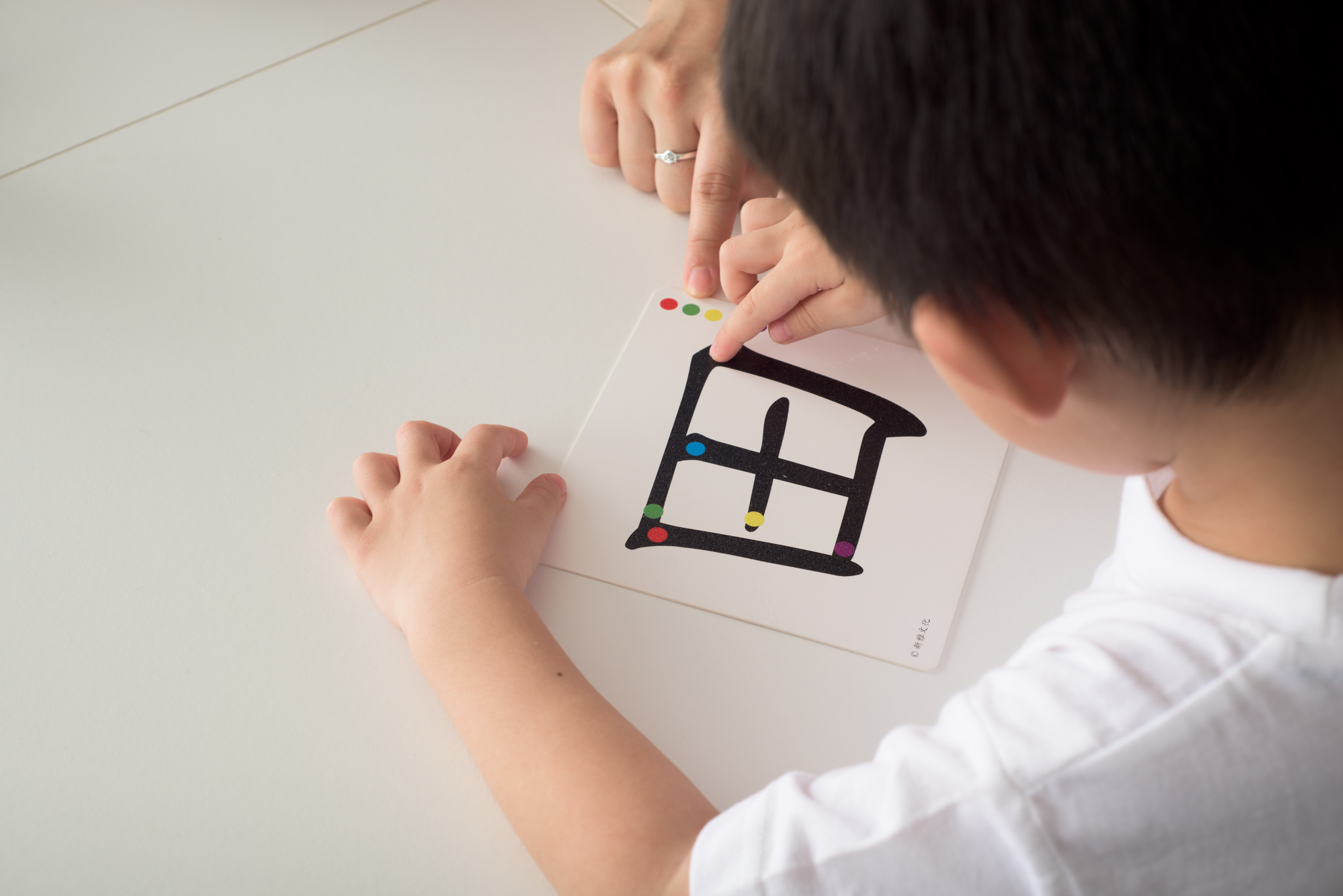


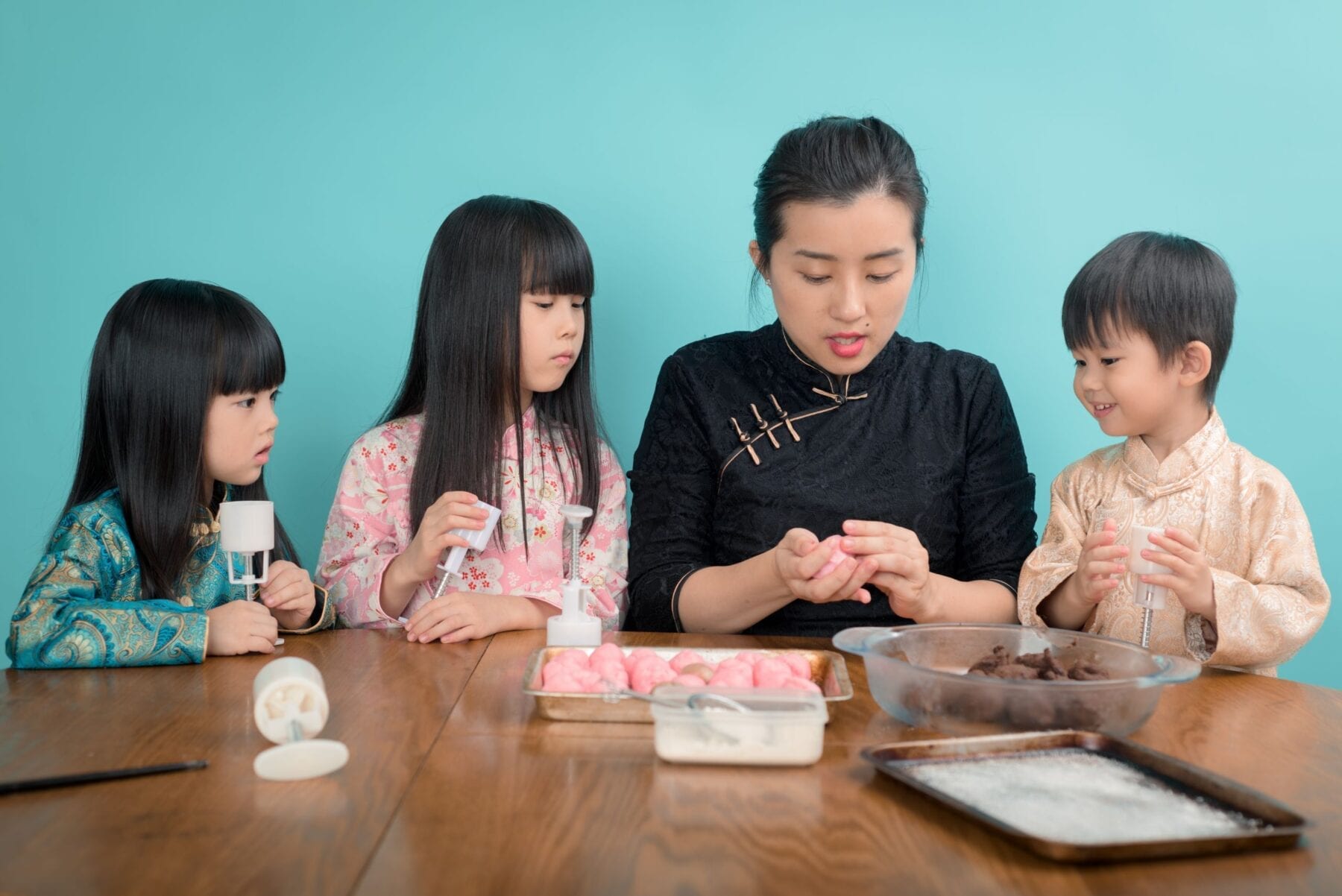


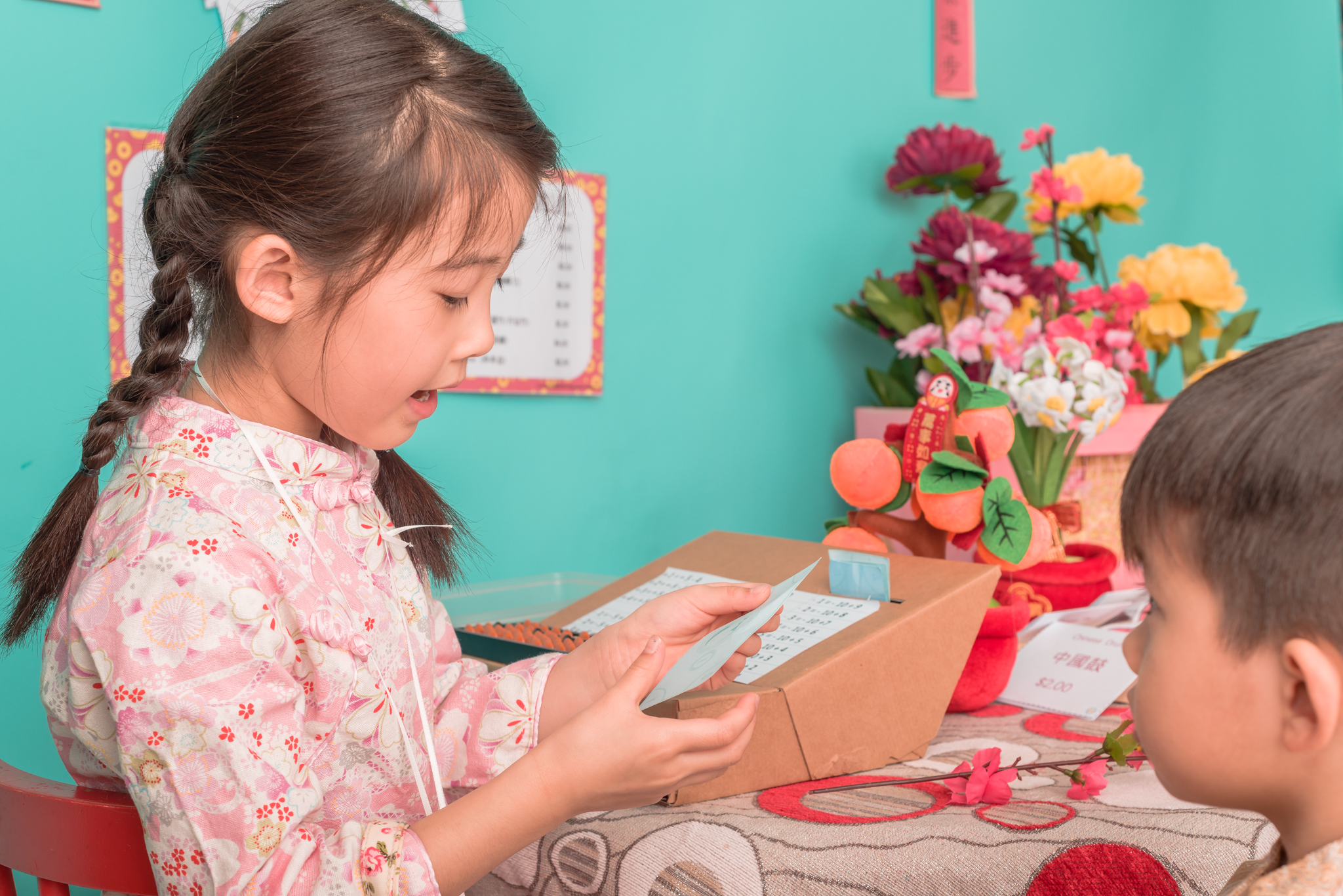



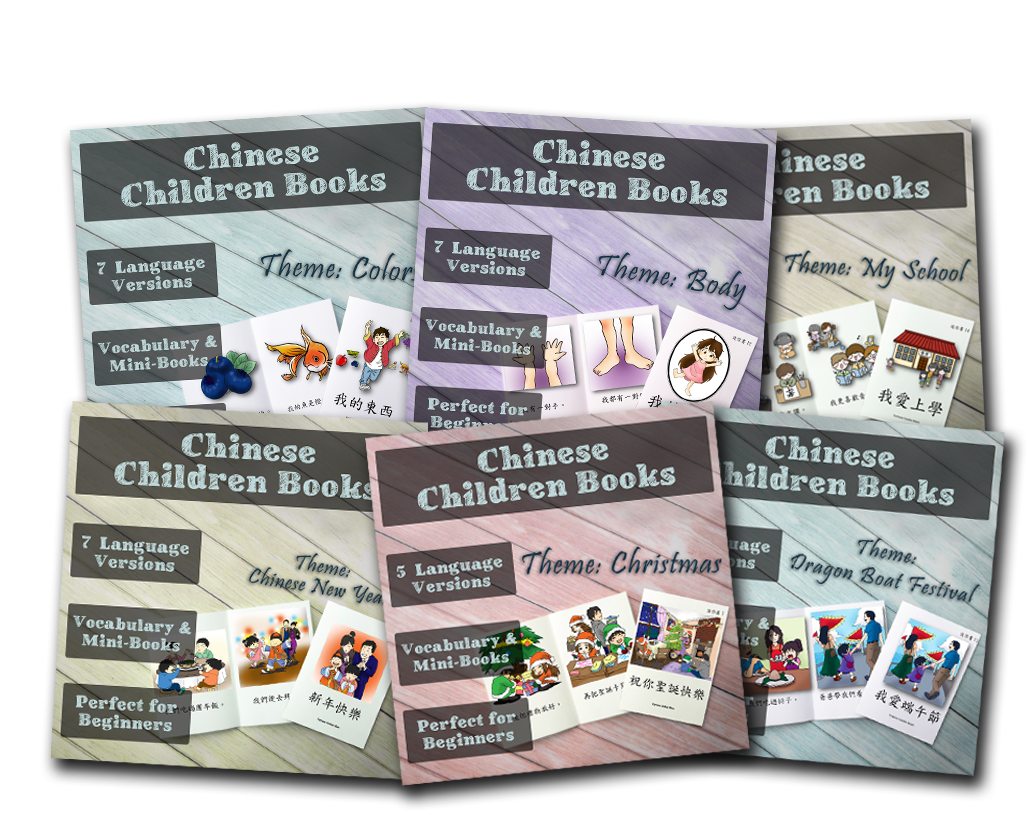
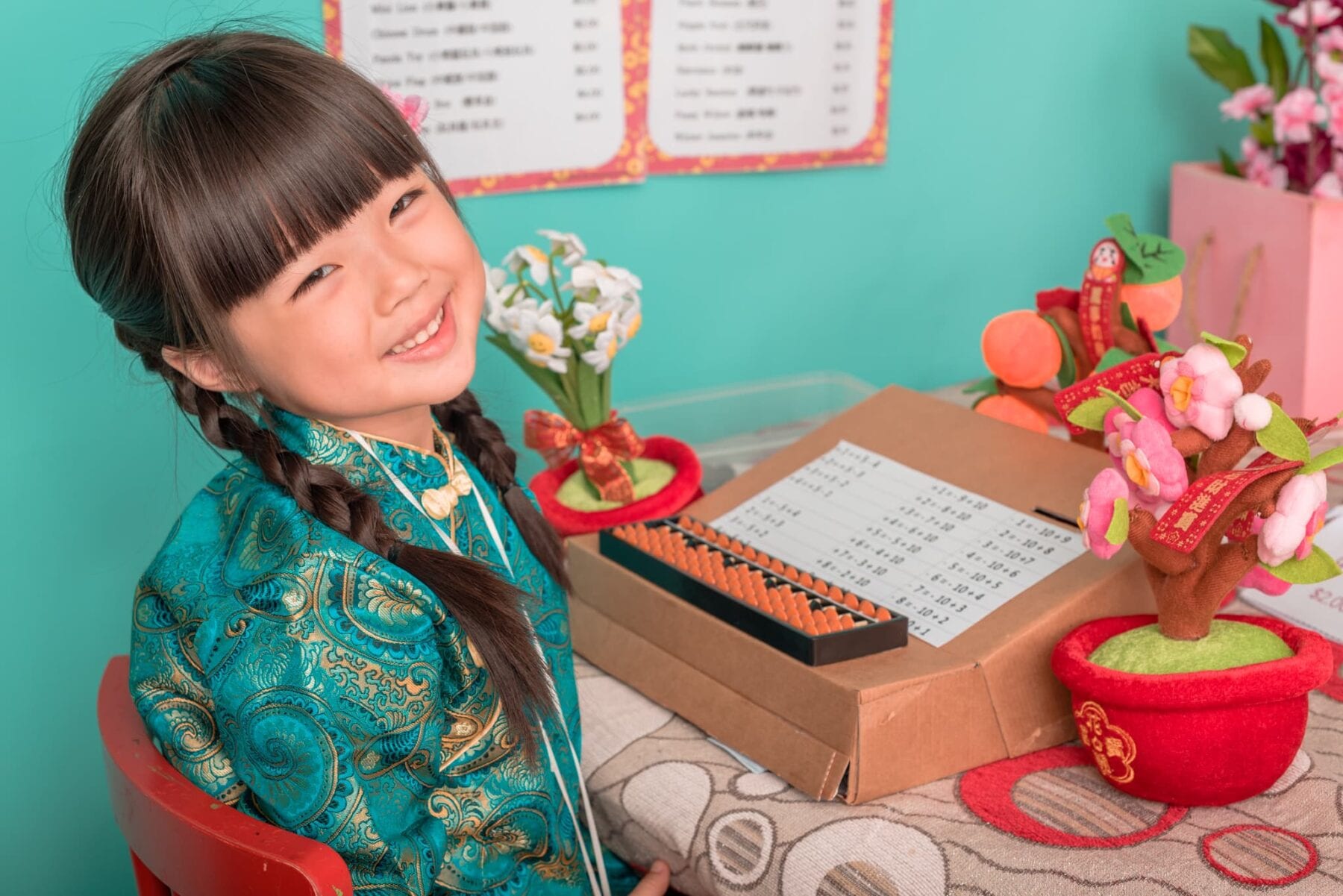








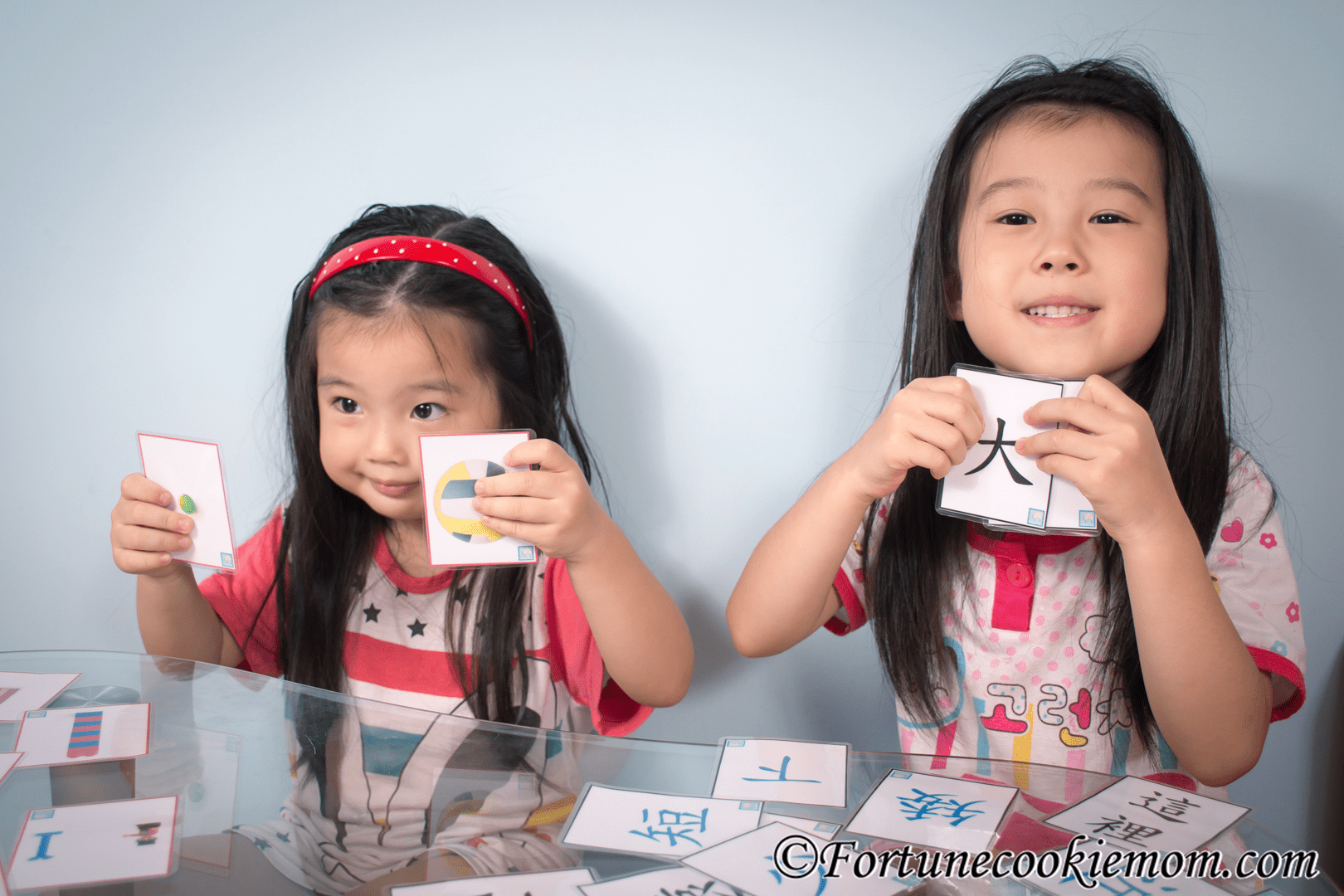
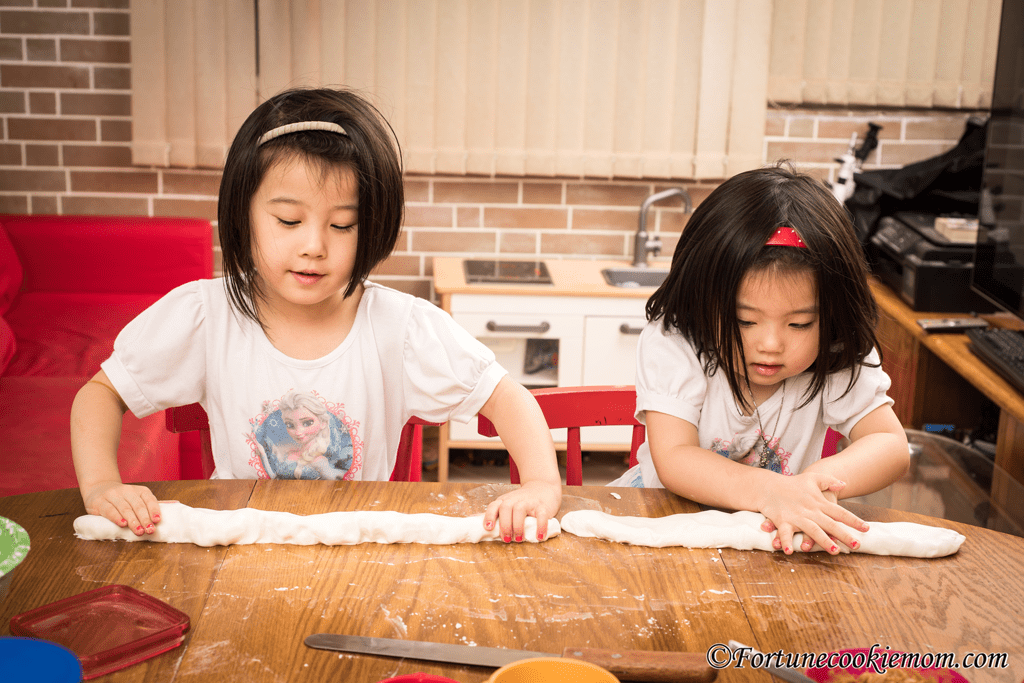


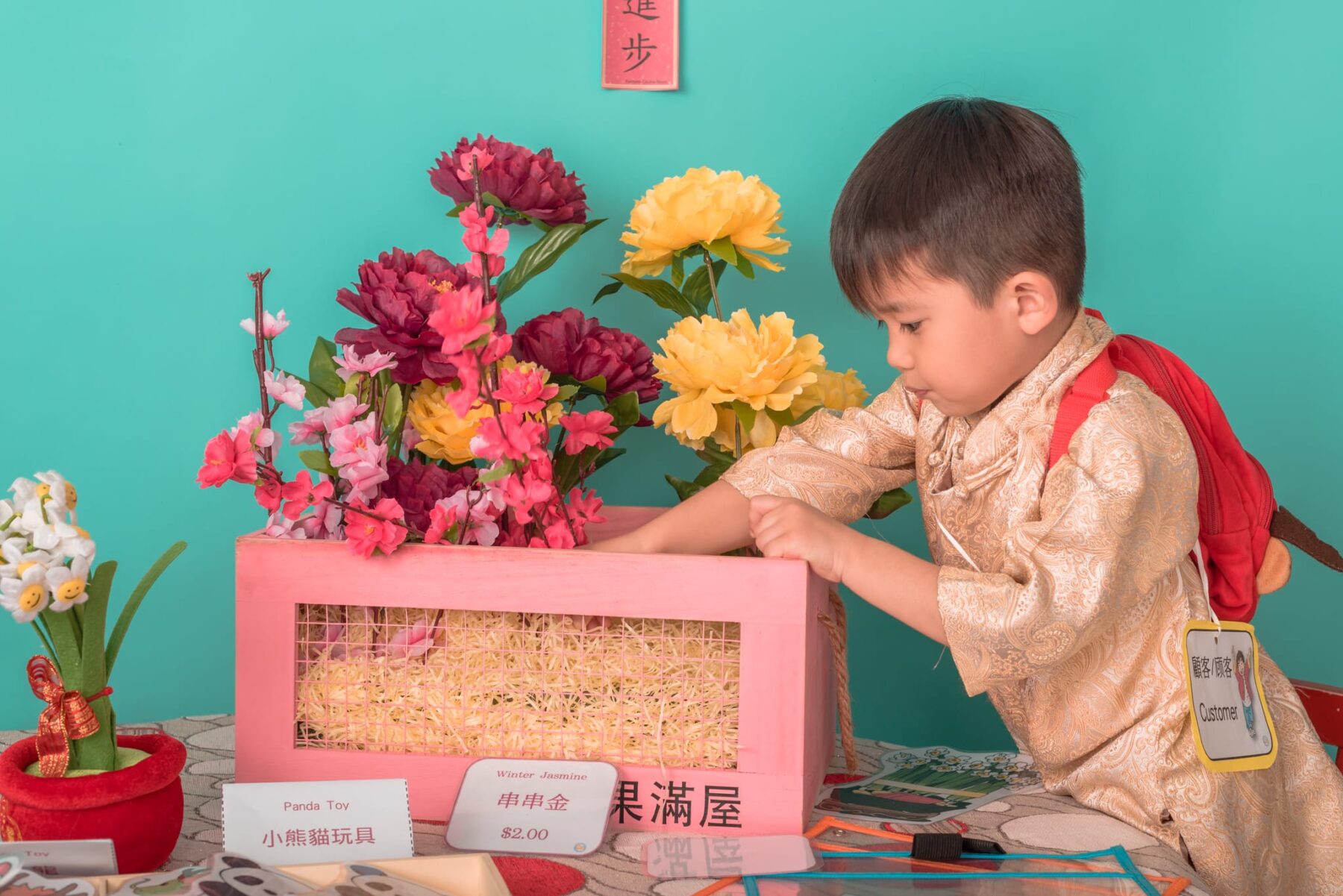


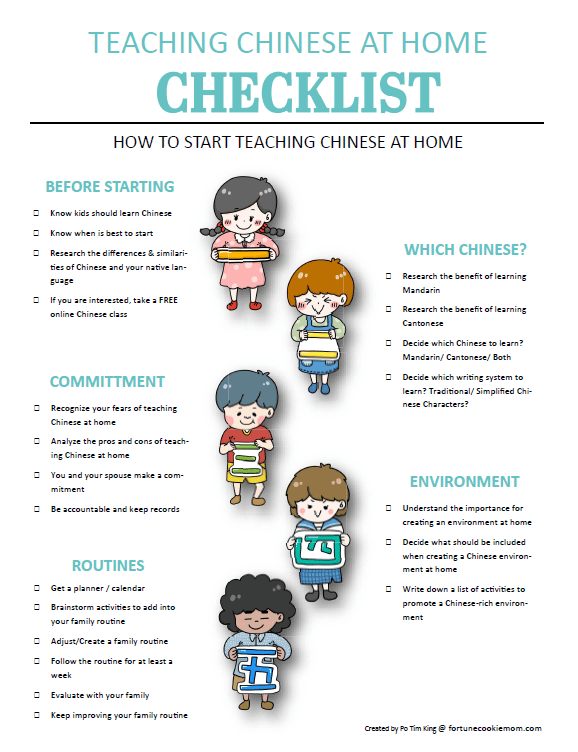
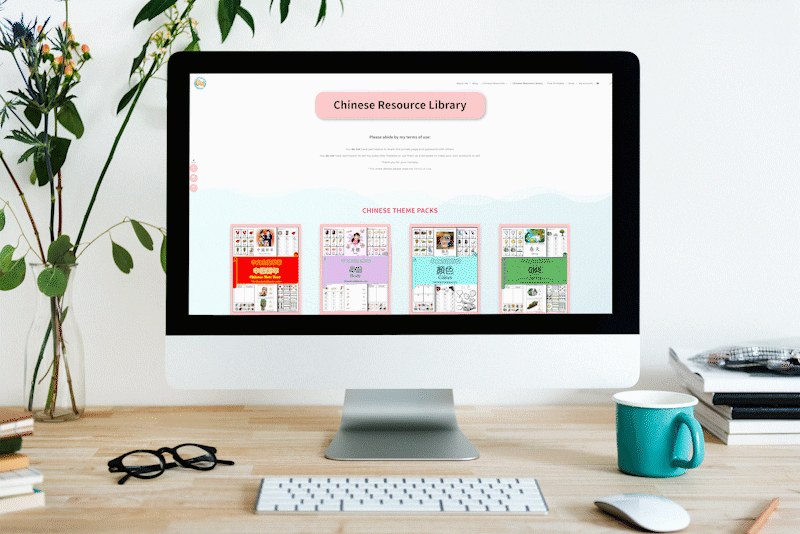
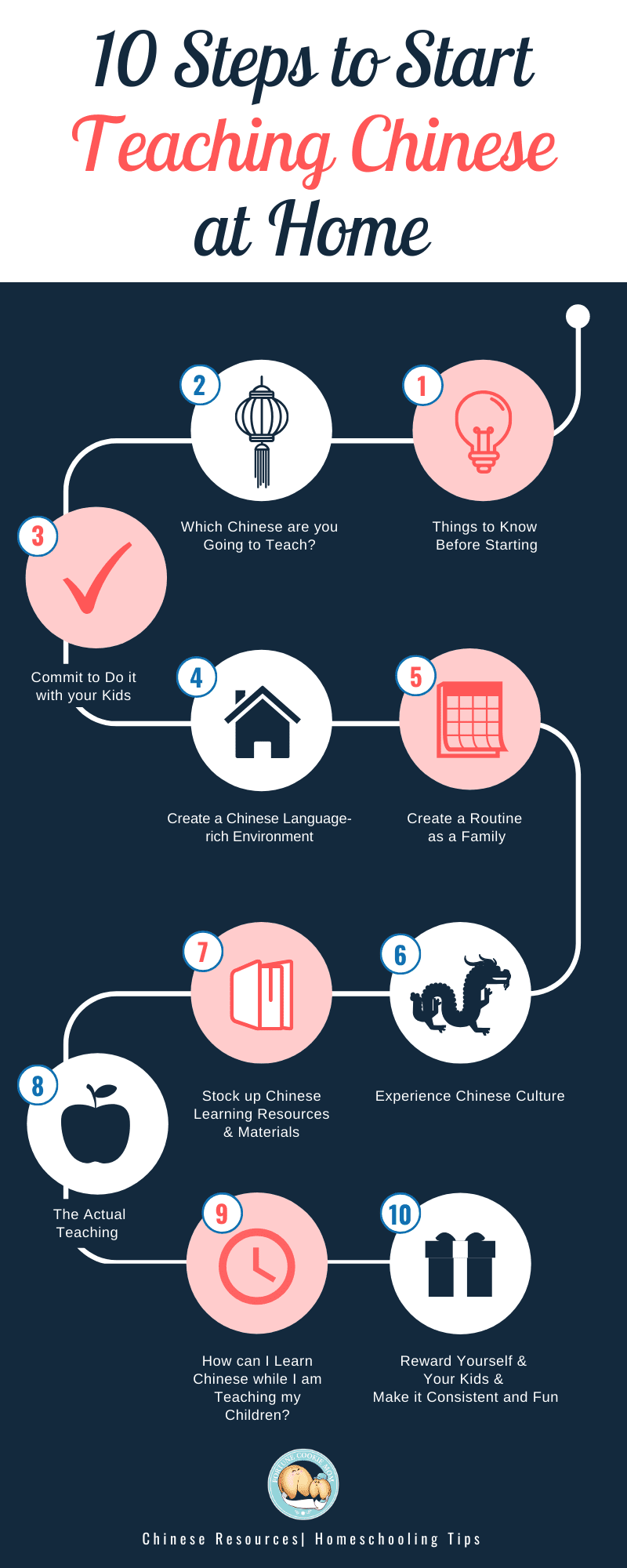


I want my children to be global learners and really to nurture their curiosity for learning into something they enjoy pursuing
Charlotte, thanks for your comment. I totally agree with you so for our fmaily, we chose to unschool our children and to give them free time and resources to pursue their interest.